There are a dozen or so tile-painting workshops you can join in and around Lisbon, but I’ve only found one in Portugal focused on Hispanic-Moorish techniques. Aldina’s beautiful creative studio is in Sintra, close to Lisbon, and I joined her tile-painting workshop a few months ago.
In this workshop, not only did we paint a Moorish-style aresta tile – we made a second one with clay, which I got to take home too. Here’s what happened at this unique tile-painting (and making) workshop in Sintra, Lisbon’s most popular day trip destination.
Read next… Lisbon’s best day trip: Sintra 1 or 2-day itinerary
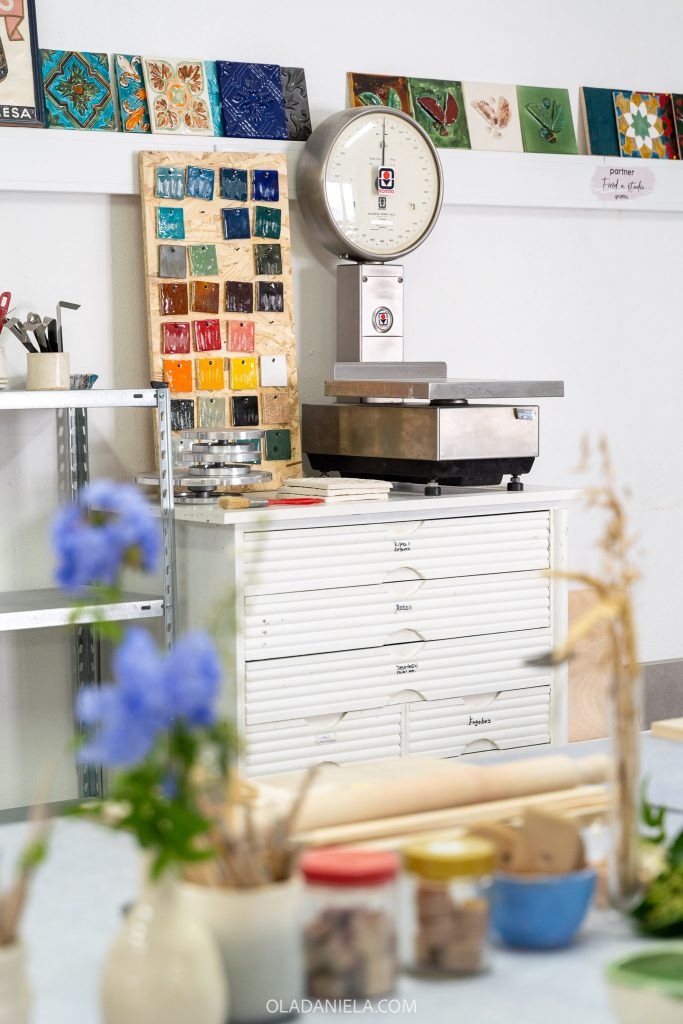
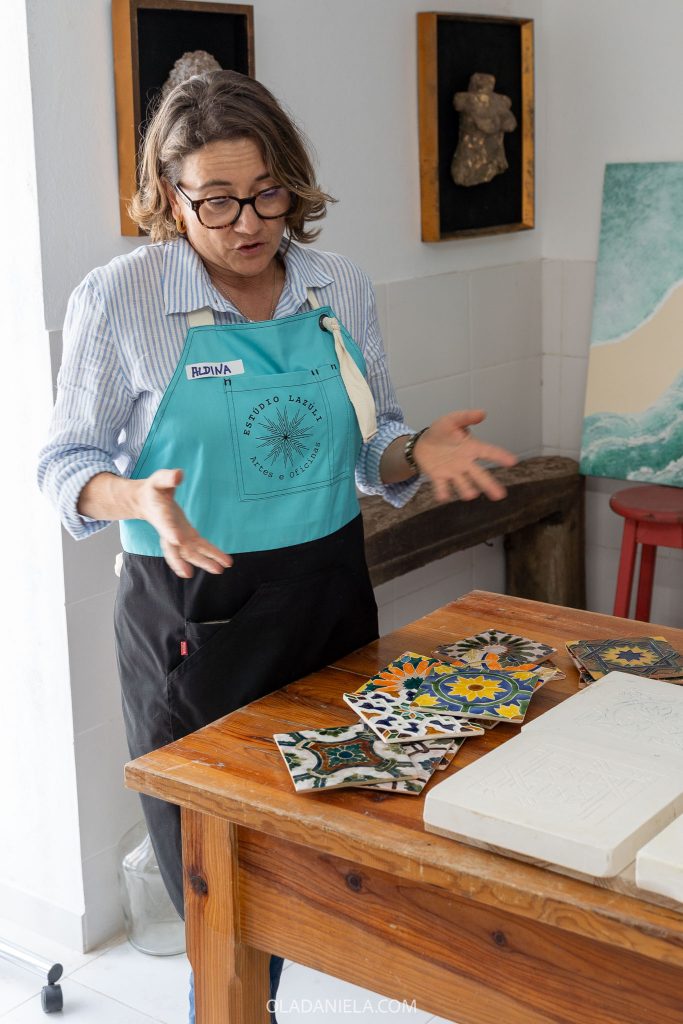
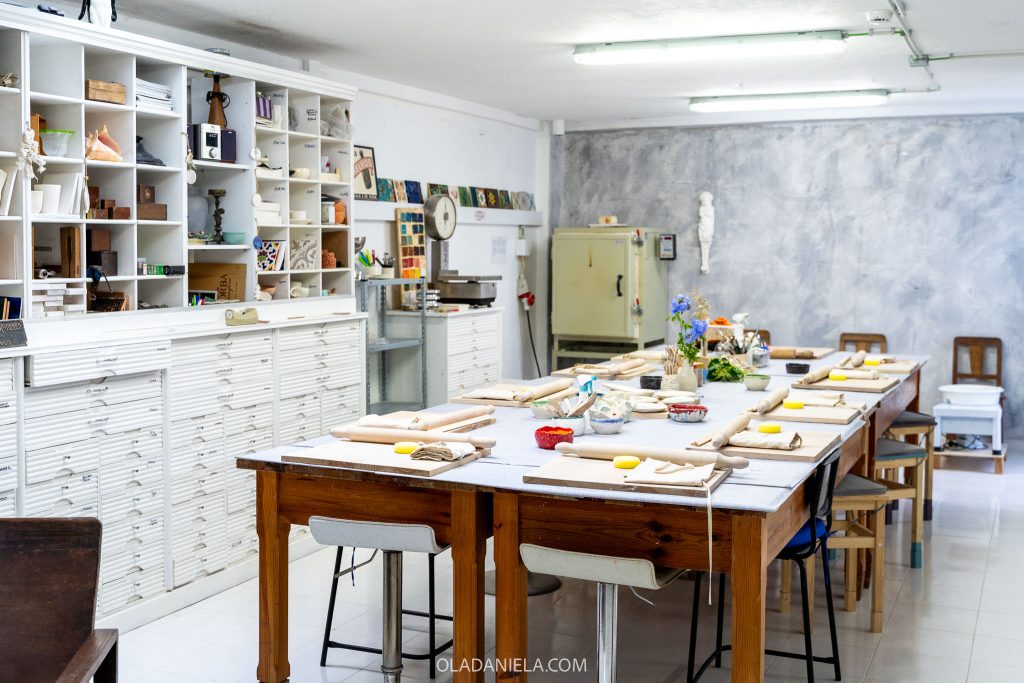
Contents
ToggleFirst, a little explainer: Portugal’s tile history & tile-making techniques
There are three main traditional techniques to make tiles – dry cord, edge, and majolica. Most of the tiles you see in Portugal will be the last one, majolica. So, you can imagine how excited I was to join a Portuguese tile-painting workshop focused on the “aresta” or edge technique.
Back in 1498 Portugal’s king took a trip to Seville where he saw beautiful Moorish tiles decorating the city. King D. Manuel I liked what he saw and decided to bring beautiful tiles to Portugal too. He made an order for the National Palace in Sintra (close to where this workshop is held). After this, churches and noble families started ordering tiles for their buildings too.
Read next… The best tile painting workshops in Lisbon, Porto and the Algarve
Dry cord or corda seca
The oldest Moorish technique is dry cord or corda seca, invented in the 10th century in what’s now Spain, but was then controlled by the Moors. A geometric pattern would be outlined with a mix of oil or fat and manganese oxide. As oil and water don’t mix, when the coloured glazes were added they would remain separate when being fired.
Edge or aresta
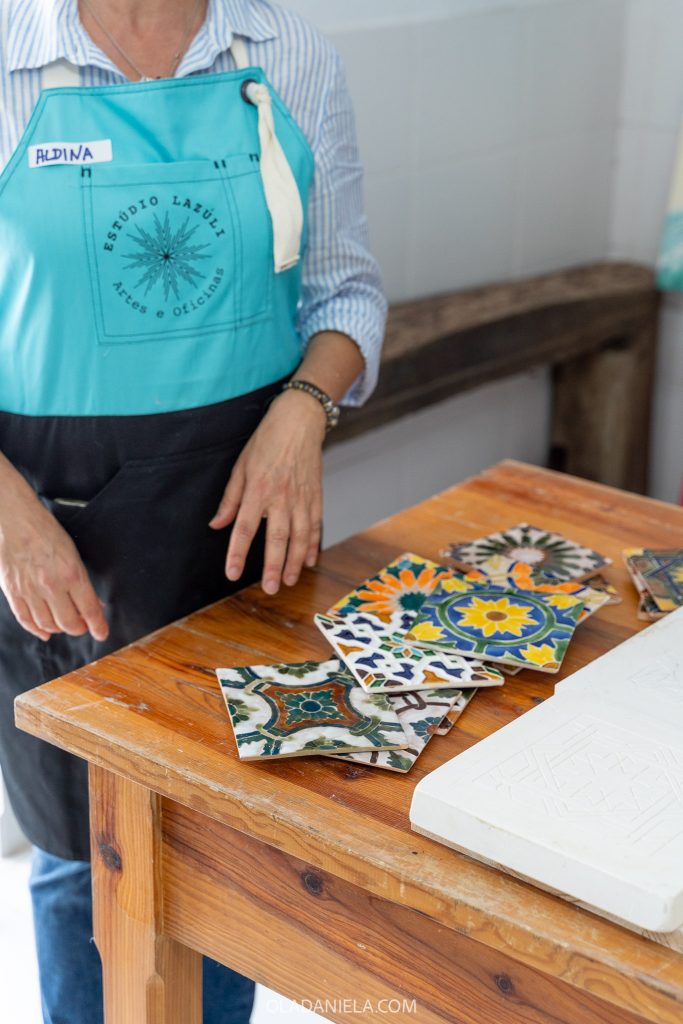
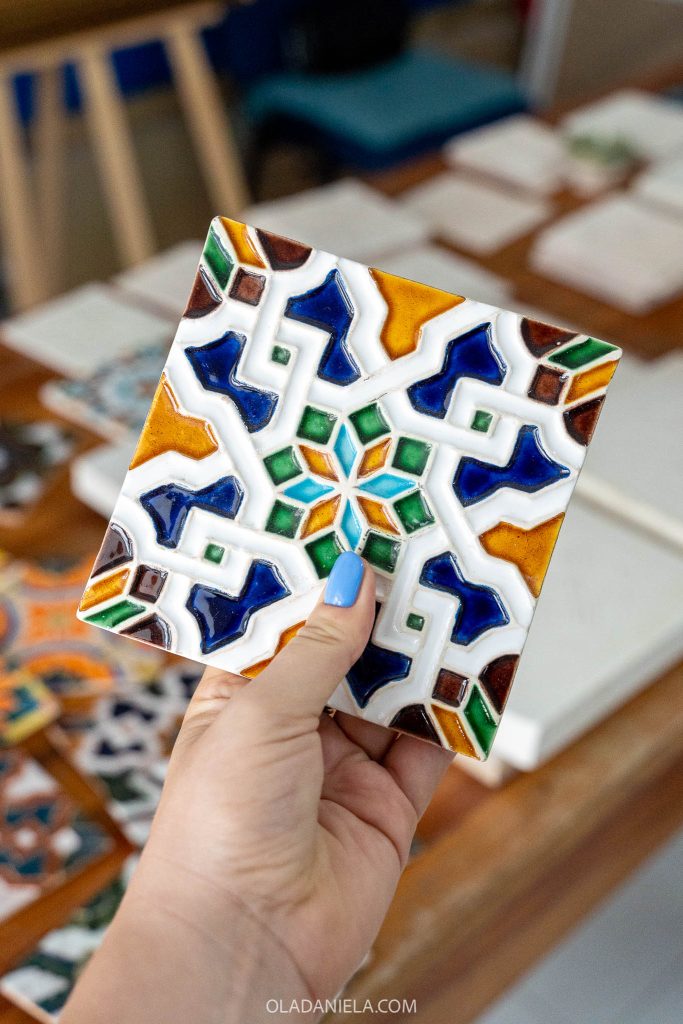
Later, the Moorish developed the aresta or edge technique in the late 15th century. This is essentially making tiles with textured edges or tiny borders or ridges that stop the colours from mixing. The clay is pressed into a plaster mold to create the edges, and after drying is painted by hand.
Majolicá
The third and final technique is majolica, which appeared in the early 16th century in Portugal. This is a flat tile dipped in white glaze, then you paint directly onto the surface. Most of the early majolica tiles were handpainted, but from the early 20th century semi-industrial tiles using a stencil technique to speed up the process began covering buildings in Lisbon and Porto.
Making our own aresta tile with clay
Estudio Lazuli’s tile studio in Sintra is a bit of an Aladdin’s cave. Taking over the ground level of a house, owner Aldina has made a creative space filled with antiques, pots of paint, ceramics, pottery wheels and more. Our group of three – two Portuguese locals and myself – were sat around a table with Aldina, who gave us an introduction to this tile technique and showed us the special moulds she’d created.
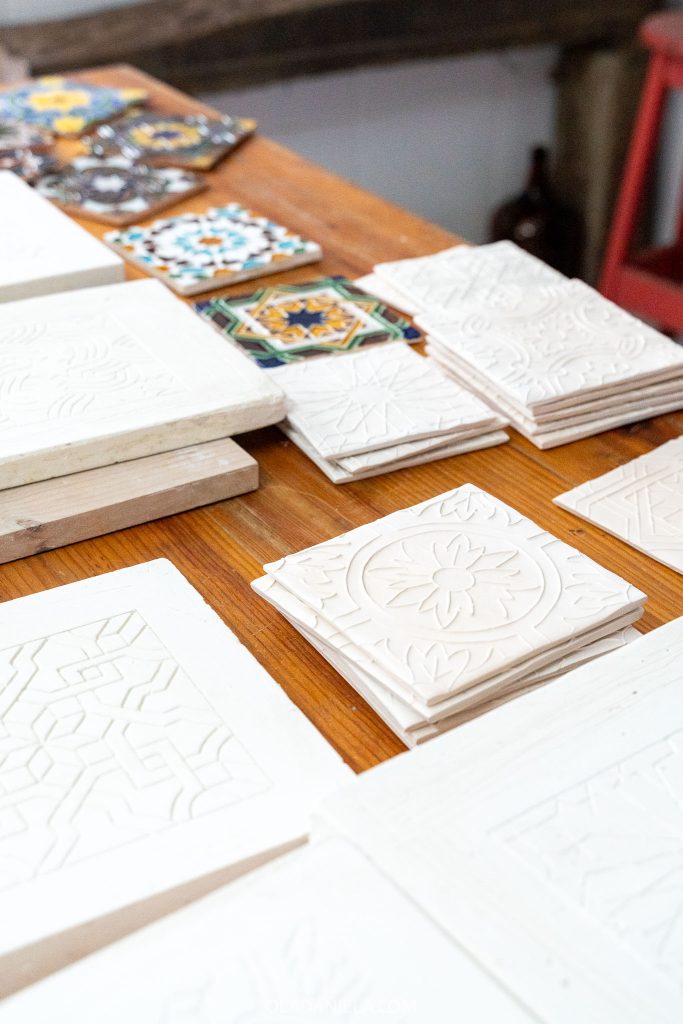
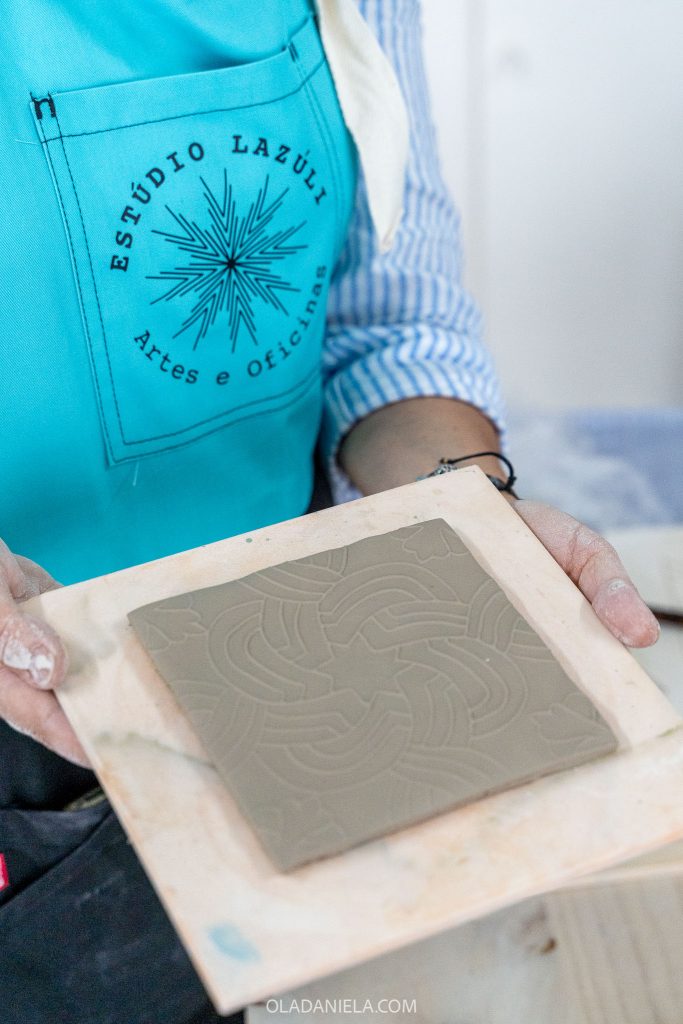
There were maybe a dozen moulds to choose from. Both more classic Moorish styles with intricate geometric patterns that mimic some of the zellige style (hand-cut mosaics), and more organic and flowy ridged tile designs with an art nouveau feel.
I got to choose one of the moulds to form my own “Hispano-Moorish” or “Hispano-Arabic” edge tile, and was handed a chunk of clay to get to work. After rolling it out into a thinner sheet, you lay it out over the mould and hand press it to get every ridge and groove from the plaster mould.
Read next… Where to shop for tiles (azulejos) in Portugal
Painting a Moorish-style tile in Lisbon
Since it would take many days for the clay tile to dry, ready to be fired, Aldina let us choose a pre-baked one she had prepared earlier so we had something ready to paint that day. I decided on a more traditional Moorish pattern but I went for bright and modern colours.
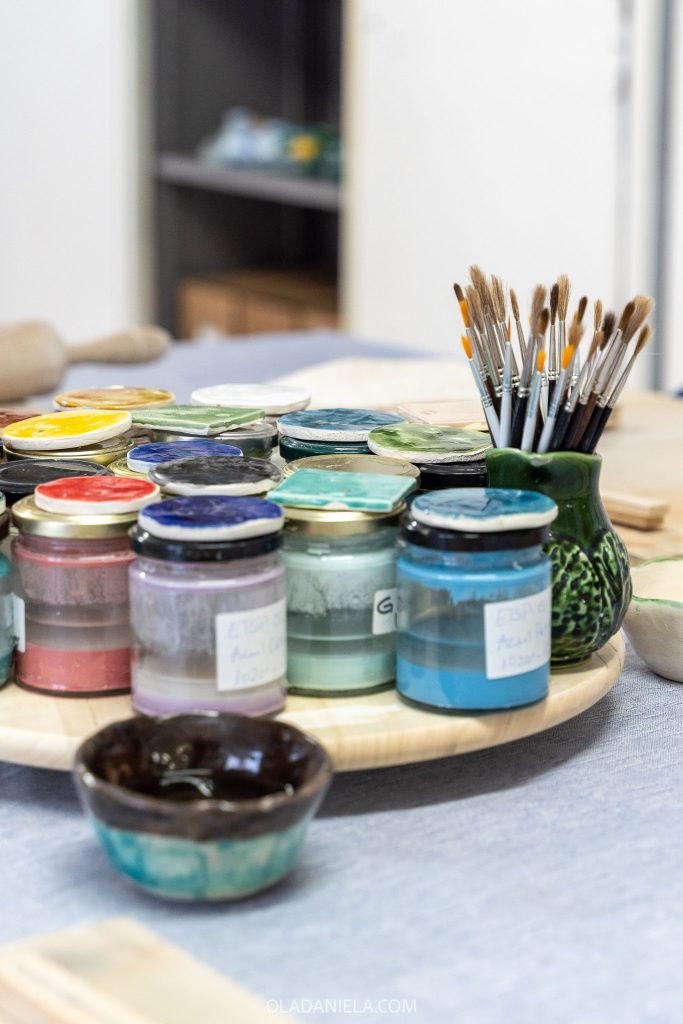
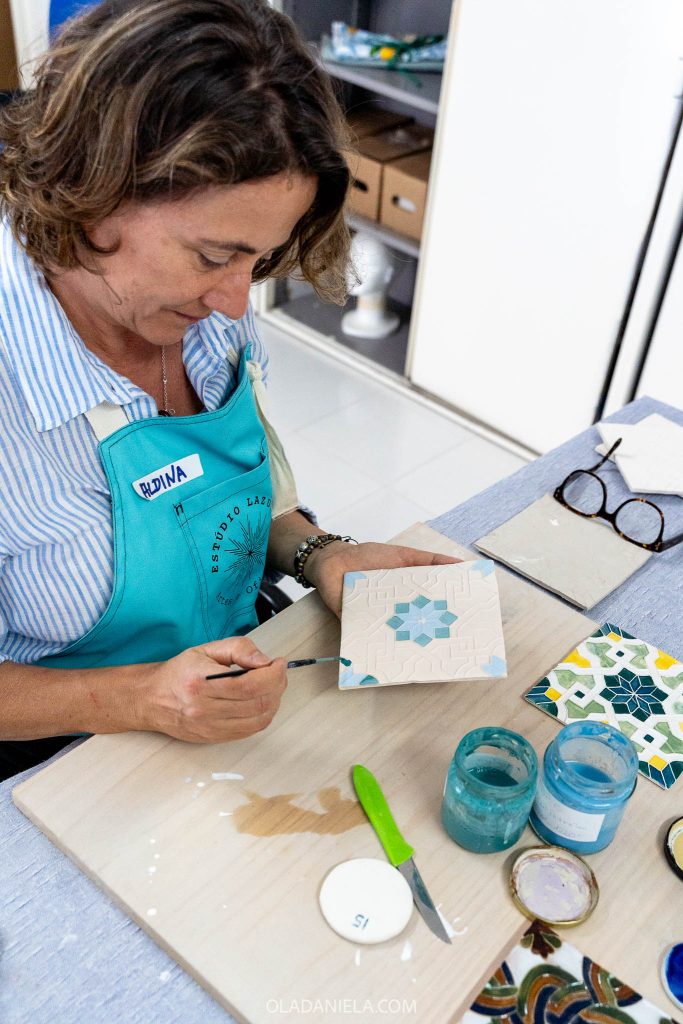
The central table was filled with glazes in at least a dozen colours – this was the hard part, choosing the colour scheme. Aldina showed us how to apply the paint using a loaded brush and how to work the colour to avoid any streaks or undesired marks.
The process of painting this type of tile is fairly straightforward and as relaxing as meditation. I know some people worry about needing artistic talent for a tile-painting workshop, but I think even the less artistically inclined would have a blast painting their own tile this way.
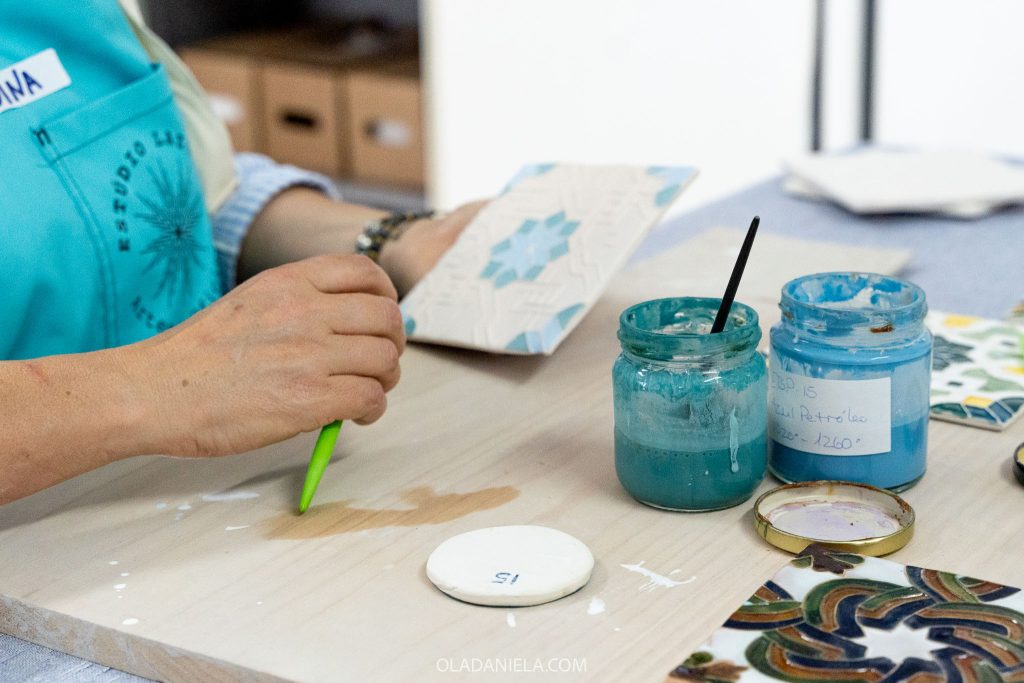
If we made any mistakes, Aldina had some tricks to fix spills or errors before the tiles went to be baked. Once we were done, we added our initials to the back of the tiles, waved goodbye and returned to the world.
Now, the tiles needed time to dry and bake. Aldina emailed us as soon as our masterpieces were ready, and since I live in Lisbon I went to collect the two myself – though I’m sure she can arrange postage or a courier to deliver it to your hotel or home address.
Need to know
- What: Hispano-Moresque tile-making and painting workshop
- Duration: 90-minutes up to two hours
- Where: Sintra, 500m (0.3 mile) from the train station
Good to know: Aldina lived in Germany for a long time too, so she speaks fluent Portuguese, German and English.
That’s what it was like to paint a tile in Sintra – you can find more tile-painting workshops in my article.
Planning a trip to Portugal? I can help! ✨ Find out more about my Portugal travel calls here.
Keep reading…
- Where to shop for tiles (azulejos) in Portugal
- Where to shop Portuguese ceramics by weight (cerâmica ao kilo) & pottery outlets
- Portugal Road Trip: Where to stop between Lisbon and Lagos, Algarve
- The best pastel de nata cooking classes in Lisbon and Porto
- Best vintage and second-hand shops in Lisbon
- Local’s Guide to Feira da Ladra, Lisbon’s Famous Flea Market
- Fall in Portugal: 8 places to visit this autumn

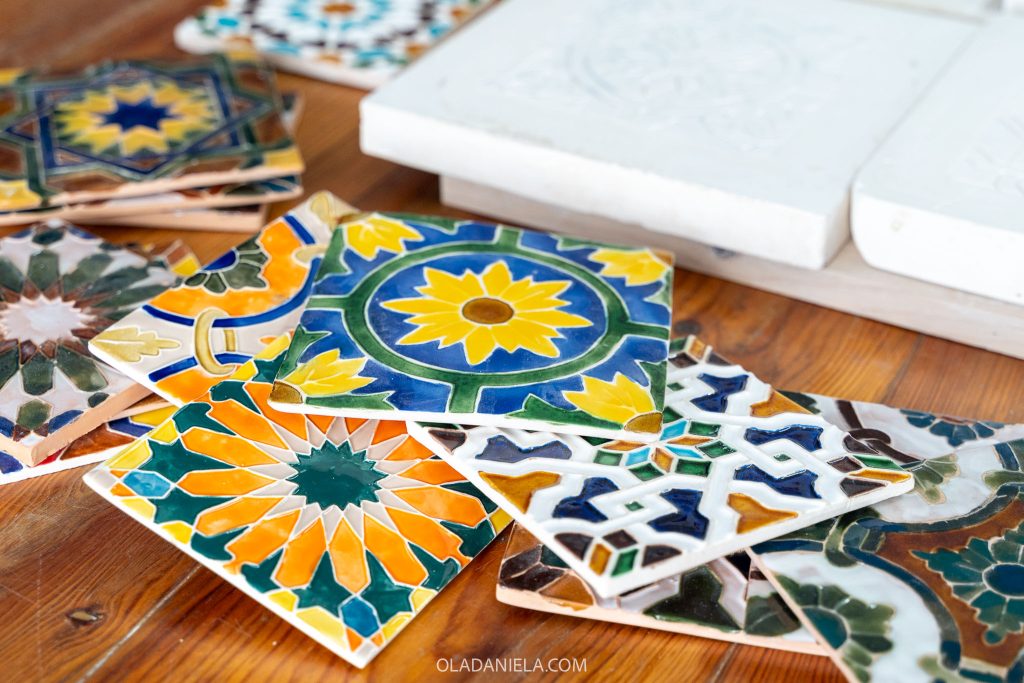
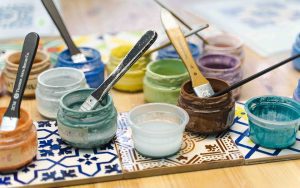

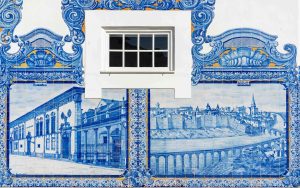

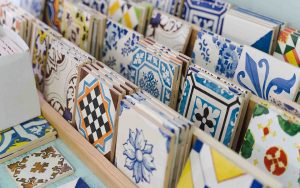
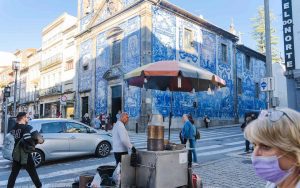
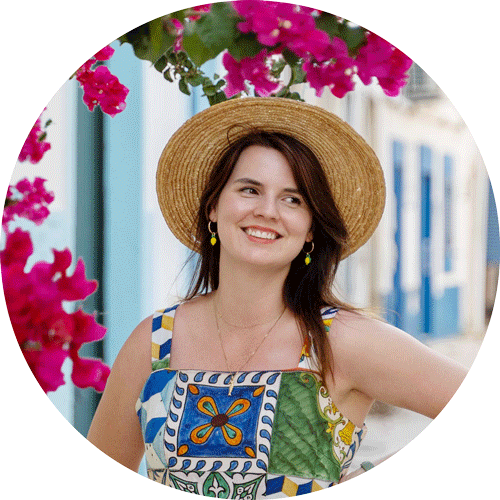





2 Responses
Hello. Thank you for such a detailed and interesting post. I would not have known about this workshop otherwise. Do you recall how long it took for your tile to be fired and ready? I am thinking of booking this workshop and would like to make sure I can get there to pick up my tile and avoid shipping fees. Thank you!
Hi Lindsay, great question – I think it usually takes 2-4 days for this studio. The tiles need to be fired overnight and then cool. I always recommend doing a tile workshop first thing/day 1 in Lisbon so you have time for collection. Hope that helps! It’s a really cool class.